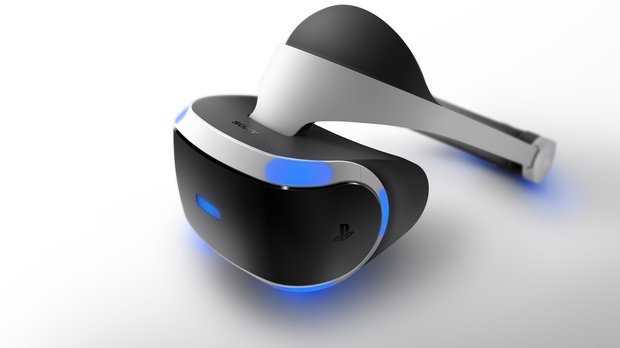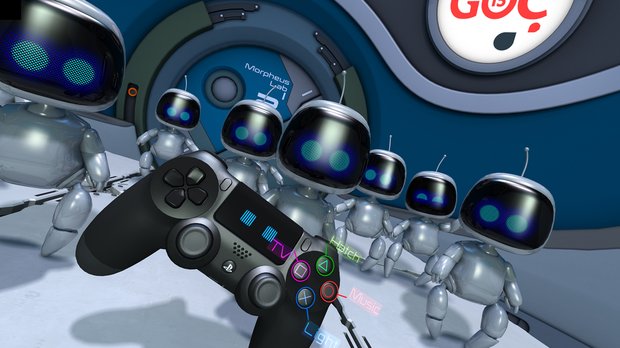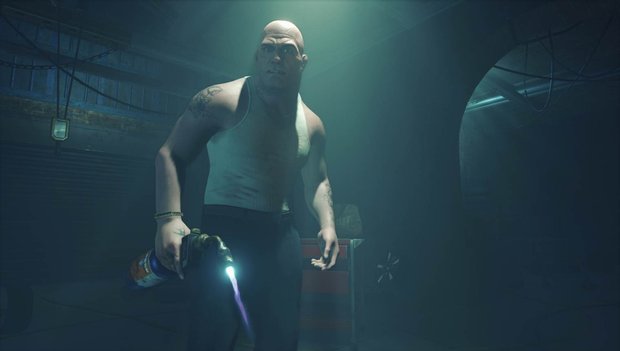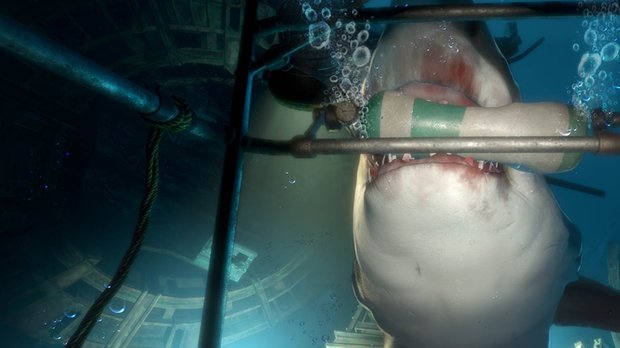Why Virtual Reality will change the way we play AND think about games
So, Virtual Reality is the next big thing, is it? Grown men and women wandering around their living rooms, wearing pairs of goggles that wouldn’t look out of place in a hokey sci-fi thriller starring some washed-up B-lister, circa 1984? Desperately bobbing up and down like a drunken uncle at a wedding, as they avoid imaginary bullets, or try to peer out of a pixelated shark-cage at some rendered manta rays? That’s everyone’s idea of a game changer is it? That’s ‘the future’?
Yes, it really is.

Until I played it, I was unsold on the VR dream. For all the reasons I listed above. VR looks stupid when it’s strapped to your head like an iFaceHugger, and using it makes you look equally ridiculous. And yet, for me, playing the VR demos on Sony’s latest version of PlayStation VR was a joy. It was the first demo in years that left me grinning like an idiot, filled with the wonder of discovering a completely new perspective on games. For me, it’s this generation’s ‘next-gen’ moment, when you realise that the way you play has taken that giant stride forward.
In previous generations we’ve looked towards graphics milestones, or advances in video game complexity to pick out these moments when ‘games change’. “Ooh, look at the detail on this Space Marine’s armour, or the reflections on this Ferrari. That’s next-gen!” This time, though, the true ‘next-gen’ is coming from the way we interact with and control games, rather than the diminishing returns of visual grunt. While some new games clearly push the bar higher when it comes to looking pretty, prompting many to declare them as the next big thing, this fidelity is often quickly matched and bettered, leaving us stuck in a dissatisfying loop. ‘Amazing graphics’ quickly become ‘normal graphics’, leaving us constantly on the look-out for that next, increasingly short-lived high. In order to feel like we’ve taken a sustainable step into the future, we need genuinely new experiences to feel that exhilaration of true technological advancement. Which is where VR so perfectly slots in.

Lofty praise, then, and words that are even more difficult to justify than normal. Because while videos and screenshots can give you some indication of the quality you’re getting in a ‘normal’ game, it’s near-impossible to demonstrate the experience of virtual reality to those who haven’t strapped on the goggles. Sure, there are hard tech specs, and demo impressions, but the sensation of actually being there is unique.
PlayStation VR itself (and I have to admit, I’m yet to use Valve’s Vive kit, but have tried the less comfortable Oculus Rift) is incredibly well designed, and actually comfortable when placed on your head. It snugly supports its own weight, and the ability to extend or retract the actual eye-piece means you can easily adjust your view. And yes, it does cater for anyone who wears glasses. Adding a pair of decent headphones completes the immersion within the game world.

Make no mistake: you are completely inside the VR world. In all my demos I’m able to look around a full 360 degrees, and check out the world above and below my eye-line. The fidelity is great too, especially as PSVR outputs in 1920xRGBx1080 - essentially making it close to the quality you get from many TVs. The only problem right now is a slight gap at the bottom of the unit, which lets some light in (which will likely be fixed with the final retail model).
Weekly digests, tales from the communities you love, and more
However, it’s what happens when you’re in-game that counts. What VR offers is a new layer of natural interactivity - in other words, what you actually do while you’re playing the game feels… right. It strips away some of that artificial gamey-ness that creates a barrier between the player and the world they’re interacting with. To give an example: while I’m playing the London Heist demo, a man offers me a mobile phone, telling me “It’s for you”. In games you’d be told to ‘press X to take phone’, which would activate a cut-scene where the character holds the handset to his ear and listens to the conversation.

In VR you simply reach out for the phone, take it with a trigger press, and lift it up to your own ear to hear the conversation. And it’s these mundane activities that make a huge difference. Later in the demo, I’m given a gun and a clip of ammo. Instead of tapping Square to reload, I just take the pistol in my right hand and slide the clip into the chamber with my left. It’s more time consuming, and more effort, but that’s exactly the point. You’re removing the automated process; you’re not simply tapping a button to have the game perform an action. You’re doing it yourself, taking ownership of a new layer of control.
Accept this, and suddenly you wonder what else VR can offer. The answer is: a whole lot more. London Heist, for example, tracks whether you’re sat down or stood-up. Again, not very sexy, but it’s amazing how powerful it is to have in-game characters react to something as simple as you sitting or standing up. You feel like you’re genuinely having an effect on the game world, and not just because you pressed a button on a controller.

Head-tracking too, allows fresh ways to play the actual game. I see it during the Bedroom Robots demo. Here you can mess with the little robots just by staring at them, because PSVR tracks your head movements and works out what you’re looking at. Not your character - you.
Of course, this level of interactivity and immersion comes with necessary responsibility. Despite being obvious works of unreality, it’s very possible to feel real emotions when playing VR. During The Deep demo, I physically step back when a shark rips off the door to the cage I’m ‘deep-sea-diving’ in. The fact that it’s not a real shark only partially registers with my brain, because I partially believe the things my eyes are seeing. Why not? I’m immersed - there are no borders on the screen.
Speaking to Shuhei Yoshida (the man overseeing PlayStation VR) he reveals that Sony’s developers have already run into certain moral issues surrounding VR. Previous versions of London Heist, for example, let the player turn the gun on themself. However, this was considered too distressing for public consumption. Similarly, the shark never claims its prey (you) in the Deep demo, as this would likely be extremely upsetting.

By having players more naturally integrated into game worlds, developers need to be increasingly conscious of what they’re asking people to actually do. While there are no real life consequences (beyond minor injuries as people trip over stuff they can’t see in the real world), the psychological impact could be great. It’s one thing to see a character die on screen, quite another to actually live their virtual death.
While these philosophical problems are yet to be truly wrestled with, there’s no doubt about the power of VR to give us experiences that ‘flat TVs’ simply can’t offer. Even with gimmicks like 3D. Yoshida himself sees many wider uses for the technology outside traditional games, citing examples like virtual car show-rooms, and the ability to ‘travel the world’ without leaving your own living room. He sees it as a potential training and learning tool, bringing students ever closer to their subject matter without the need for ‘live practice’. Imagine being able to study the surface of the moon in VR, or train young doctors to perform complex surgery without risking human life. It’s clear that this tech has so much yet to offer.

It’s this potential that truly excites me. While the demos I played today are mere samples of what we’ll be playing later in 2016 (if they become proper games at all), there’s something undeniably fresh and exhilarating about them. Even these small slices feel like the future of interactive entertainment… even if you do look like a fool when you’re playing them.



